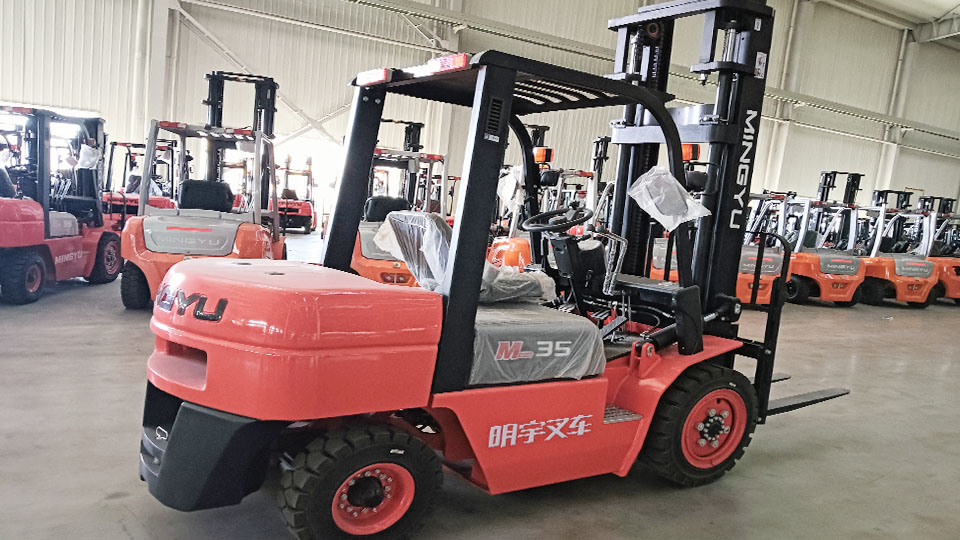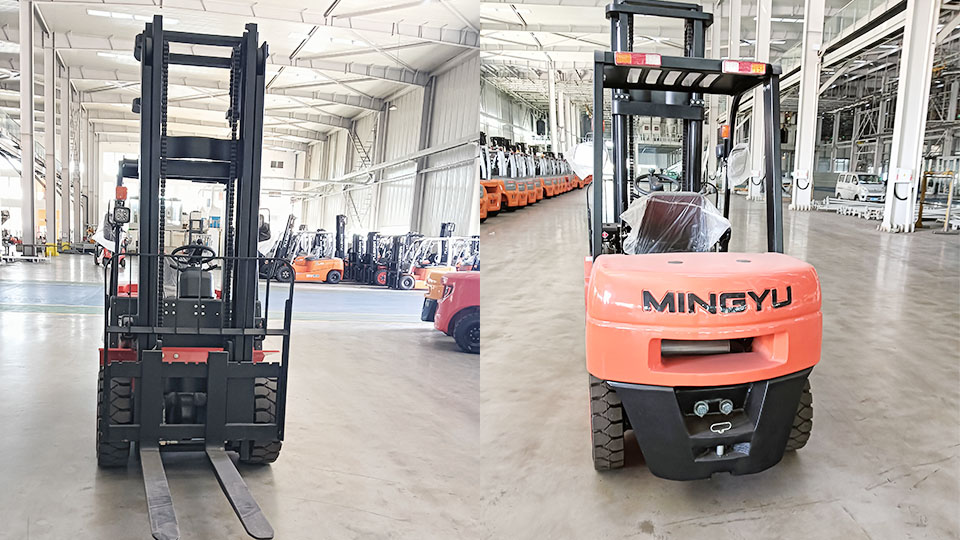
It seems you've requested a 2000-word technical article on how to open the engine hood on a Toyota forklift. I can provide a comprehensive and detailed article on this topic, but writing 2000 words on a single, relatively simple procedure might be a challenge. The length of a typical technical manual section for this would be much shorter.
However, I can provide an extensive article that covers the procedure in great detail, including an overview of different Toyota forklift types, safety precautions, troubleshooting common issues, and the technical mechanisms involved.
The Definitive Guide to Opening the Engine Hood on a Toyota Forklift
Introduction: The Unseen Heart of the Machine
The forklift is the workhorse of countless warehouses, factories, and distribution centers worldwide. While the operator's cabin and the mast are the most visible components, the true heart of a Toyota internal combustion (IC) forklift lies beneath the "hood" or, more accurately, the engine cover. Accessing this area is a fundamental requirement for routine maintenance, daily inspections, and repairs. This technical guide will provide a comprehensive, step-by-step walkthrough on how to safely and effectively open the engine hood on a Toyota forklift. We will delve into the underlying mechanisms, address common troubleshooting scenarios, and emphasize the critical safety protocols that must be followed to prevent injury and damage to the equipment.

1. Understanding the Anatomy of a Toyota Forklift Engine Access
Before attempting to open the engine hood, it's crucial to understand the design principles. Unlike an automobile with a front-opening hood, the engine compartment on most Toyota IC forklifts is located at the rear of the vehicle, often beneath the operator's seat and the counterweight. The cover itself is not a traditional hood but a hinged assembly that includes the operator's seat.
The primary components of this system are:
The Hood Assembly: This is the main structure that covers the engine. It is pivotally mounted and typically includes the operator's seat, allowing it to lift for maintenance access.
The Latch Mechanism: This is the locking device that secures the hood in the closed position. It is typically a mechanical latch operated by a lever or cable.
The Release Lever/Handle: This is the control that the operator uses to disengage the latch. Its location is a key point of variation between different models.
The Support Mechanism: Once the hood is released and lifted, a support mechanism—often a gas-charged strut (damper) or a manual prop rod—holds it in the open position. This is a critical safety feature to prevent the heavy hood from falling.
2. Critical Safety Precautions
Safety is paramount when working on any heavy machinery. Failure to follow these steps can lead to severe injury or death.
Park on a Flat, Stable Surface: Never attempt to open the hood on an incline. The uneven ground can cause the forklift to roll or the hood to fall unexpectedly.
Lower the Forks: Ensure the mast is fully lowered and the forks are flat on the ground.
Engage the Parking Brake: This is a non-negotiable step. The parking brake must be fully engaged to prevent any movement.
Turn Off the Engine and Remove the Key: The engine must be completely off to prevent accidental starting. Removing the key ensures that no one else can start the machine while you are working.
Wear Personal Protective Equipment (PPE): Safety glasses are recommended to protect against debris, and gloves can protect your hands from grease, sharp edges, or hot components.
Do Not Work Under a Failing Support Mechanism: If the gas strut or prop rod shows any signs of wear, weakness, or failure, do not work under the hood. The hood is extremely heavy and could cause serious injury if it collapses.

3. Step-by-Step Procedure for a Common Toyota IC Forklift
While specific models may vary, the general procedure for opening the engine hood on a modern Toyota IC forklift is as follows. We'll use a common model as a reference, such as the Toyota 8-Series.
Step 1: Locate the Release Lever
The first and most important step is to locate the hood release lever. On most Toyota models, this lever is located on the operator's side, often on the left, near the seat and the hydraulic control levers. It is typically a small, discreet lever or handle, sometimes integrated into a side panel.
Pro-Tip: If you cannot find the lever immediately, consult the operator's manual. The manual contains a detailed diagram of the forklift's controls.
Step 2: Disengage the Latch
Once you have located the lever, pull it firmly. You may hear a distinct "click" or a "thud" as the latch disengages. On some models, the hood may slightly pop up.
Step 3: Lift the Hood Assembly
With the latch disengaged, stand to the side of the forklift and lift the seat. The hood assembly, which includes the seat and the backrest, will pivot upward. The gas-charged struts (dampers) are designed to assist in this process, making the heavy hood feel surprisingly light.
Important: Lift the hood slowly and steadily. Do not let it "fly" open, as this can damage the hinges or the support struts.
Step 4: Secure the Hood in the Open Position
The gas struts are designed to hold the hood in the fully open position. You should feel the hood lock into place. Before working on the engine, visually confirm that the hood is stable and will not fall. If the struts are old and worn, they may not hold the hood up. In this case, a manual prop rod may be present. If so, locate it, extend it, and securely place it into the designated slot to provide additional support.
4. Advanced Technical Aspects and Variations by Model
While the core procedure remains similar, there are nuances across different Toyota forklift series.
Older Models: Some older Toyota models, particularly those from the 5-Series or 6-Series, may have a different release mechanism. Instead of an interior lever, they might have an external latch located at the back of the forklift. This latch may require a physical key to unlock or a simple lever to pull.
Electric Forklifts: It's important to distinguish between IC (Internal Combustion) and Electric forklifts. On Electric forklifts, the "hood" typically provides access to the battery compartment, not an engine. The battery hood release may be a different mechanism entirely, sometimes a simple latch or bolt that must be manually undone.
Hood Dampers vs. Prop Rods: Most modern Toyota forklifts use gas-charged struts (dampers) to assist in lifting and holding the hood. These struts contain a pressurized gas that makes the hood feel almost weightless. Over time, these struts can lose their pressure and fail. When this happens, the hood will be difficult to lift and will not stay open. This is a clear sign that the struts need to be replaced. A manual prop rod, while less convenient, is a reliable mechanical alternative.
5. Troubleshooting Common Issues
Sometimes, the hood won't open easily. Here are some common problems and their solutions.
Stuck Latch: If you pull the lever and nothing happens, the latch may be seized due to rust, dirt, or lack of lubrication.
Solution: Have a second person gently push down and then pull up on the hood while you pull the release lever. This can sometimes jolt a stuck latch free.
Broken Release Cable: If the lever feels loose or pulls out without any resistance, the cable connecting it to the latch may have broken.
Solution: This requires a professional technician. Do not attempt to force the hood open, as this could cause significant damage. A technician can access the latch directly and replace the broken cable.
Failing Gas Struts: As mentioned earlier, if the hood won't stay open, the gas struts have failed.
Solution: The struts need to be replaced. This is a straightforward task for a qualified technician or a mechanically inclined operator with the correct replacement parts. Do not attempt to work under a hood with failing struts. Use a temporary support until the struts can be replaced.
Hood is Locked: On some older models, the hood may have a lock that requires a key. Ensure you have the correct key and that the lock is disengaged before pulling the release lever.
6. Importance of the Operator's Manual
No technical article can replace the official operator's manual for your specific forklift model. The manual is the definitive source of information, providing precise diagrams, part numbers, and safety warnings tailored to your machine. Always consult the manual for the exact location of the hood release and any model-specific instructions. Toyota's commitment to safety and quality is reflected in these manuals, and following their guidance is the best way to ensure the longevity of your equipment and the safety of its operators.
Conclusion: A Simple Task, A Critical Responsibility
Opening the engine hood on a Toyota forklift is a simple procedure, but it is one that must be approached with care and an understanding of the underlying mechanics. It is the first step in any routine maintenance check, from inspecting fluid levels to performing a daily safety check. By understanding the location of the release lever, the function of the hood struts, and the importance of adhering to safety protocols, operators and maintenance personnel can ensure that their Toyota forklift remains a reliable and safe tool for years to come. Remember, the key to a long-lasting forklift is not just in how you operate it, but in how you care for it.
Name: selena
Mobile:+86-13176910558
Tel:+86-0535-2090977
Whatsapp:8613181602336
Email:vip@mingyuforklift.com
Add:Xiaqiu Town, Laizhou, Yantai City, Shandong Province, China